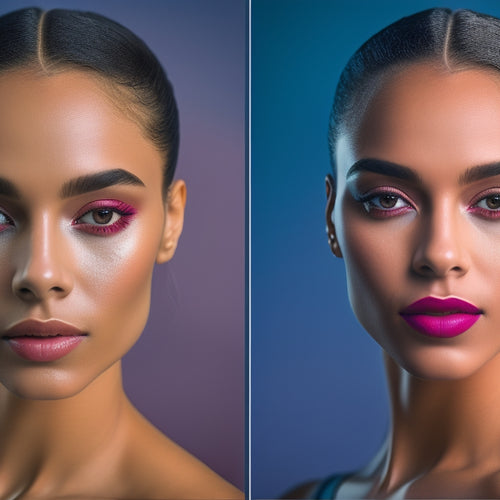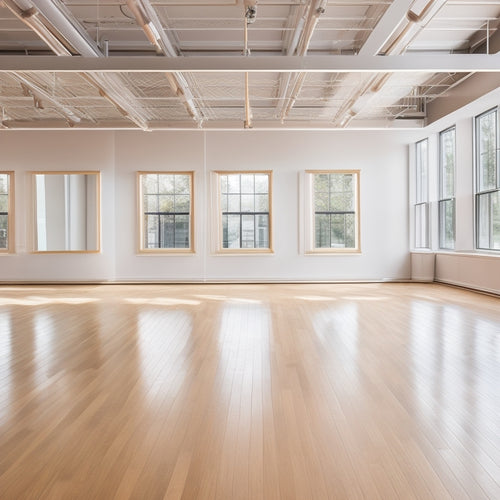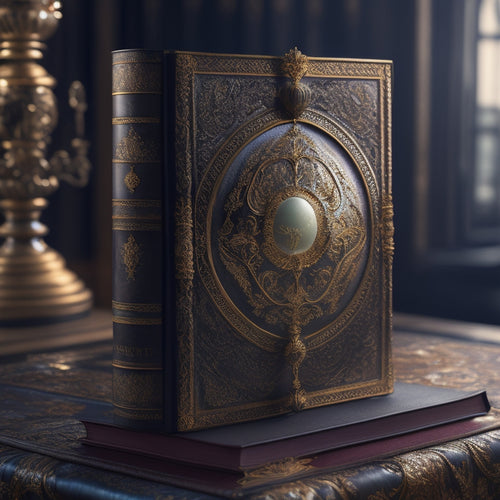
Master the Art of Painting With Ease
Share
Mastering the art of painting with ease requires a deliberate and intentional approach, one that establishes a strong foundation in the fundamentals of technique, color, and composition. By setting up a workspace that fosters success, artists can refine their brush strokes and blend colors with precision. A deep understanding of techniques, such as color mixing and brushwork, is essential for igniting creative potential. As artists build confidence in their skills, they can focus on evoking emotions and moods through color psychology and deliberate composition. With a strong foundation in place, the possibilities for artistic expression become endless, waiting to be explored.
Key Takeaways
• Set up your workspace strategically to ensure proper lighting, easy access to tools, and refined brush strokes.
• Master fundamental techniques, including color mixing and brush strokes, to unlock creative potential.
• Develop precision and control with your brush to create nuanced color palettes and textures.
• Experiment with mediums and materials to add dimensionality and depth to your art.
• Use principles of color psychology to evoke specific emotions and moods in your paintings.
Setting Up for Success
Before delving into the creative process, set the stage for success by carefully selecting and arranging your workspace. A well-coordinated environment can greatly impact the quality of your artwork.
A well-structured workspace begins with proper lighting, ensuring that your colors remain true and your brush strokes precise. Consider the layout of your tools and materials, keeping frequently used items within easy reach to minimize distractions and maximize productivity.
With your workspace in order, you can focus on refining your brush stroke techniques. Experiment with varying strokes to achieve unique textures and effects. As you work, remember to blend colors intentionally, creating harmonious progressions that elevate your artwork to new heights.
Painting Fundamentals Uncovered
What sets a novice apart from a master painter is a deep understanding of the fundamental techniques that govern the art form, and it is these essential skills that will be explored in depth.
Color mixing is a critical component, as it allows artists to create a vast range of hues and shades. By mastering the art of color mixing, painters can achieve nuanced and complex color palettes that elevate their work.
Brush techniques are equally important, as they can be used to create a variety of textures, from smooth and blended to rough and impasto. Understanding how to wield a brush with precision and control is key to revealing a painter's full creative potential.
Bringing Your Art to Life
As artists gain confidence in their fundamental skills, they can begin to focus on imbuing their work with a sense of energy and emotion, bringing their art to life through deliberate composition and color choices.
By applying principles of color psychology, artists can evoke specific emotions and moods in their viewers.
Brush techniques such as impasto and glazing can add depth and texture to a piece, drawing the viewer in.
Additionally, exploration of texture through mediums and materials can add an extra layer of dimensionality.
Frequently Asked Questions
How Do I Overcome Creative Blocks and Stay Motivated?
To overcome creative blocks and stay motivated, find inspiration through research and observation, staying focused on your artistic vision. Explore new techniques and seek constructive feedback to reignite passion and drive artistic growth.
Can I Mix Different Types of Paint, Like Acrylic and Oil?
Can paint compatibility be compromised by mixing mediums? Generally, no, but it's essential to understand the characteristics of each paint type, such as acrylic's fast-drying nature and oil's slow-drying properties, to employ effective mixing techniques and avoid potential pitfalls.
What Is the Best Way to Store Unfinished Canvases?
When storing unfinished canvases, maintain a consistent temperature between 60-70°F (15-21°C) and control humidity levels to prevent warping or damage; store canvases flat, away from direct sunlight, and consider using acid-free paper or cloth to separate and protect each piece.
How Often Should I Clean and Maintain My Brushes?
'As the Renaissance masters once treasured their tools, so should you prioritize brush care; clean your brushes weekly with mild soap and lukewarm water, and deep clean monthly with brush cleaner to maintain peak performance.'
Can I Use Household Items as Painting Materials?
'Explore DIY techniques by repurposing household items as unconventional tools, discovering artistic possibilities with recycled materials. Consider using sponges, fabric, or found objects to add unique textures and dimensions to your artwork.'
Related Posts
-

Why Lyrical Dancers Need Pro Makeup Guidance Online
As a lyrical dancer, you know that a polished, performance-ready look is essential to showcasing your skills and conv...
-

Best Studio Mirrors for a Professional Dance Space
Choosing the best mirrors for your professional dance space can enhance your practice. High-quality glass mirrors pro...
-

The King Manual: Your Ultimate Knowledge Companion
The King Manual: Your Ultimate Knowledge Companion is an all-encompassing resource that opens up the power of knowled...


